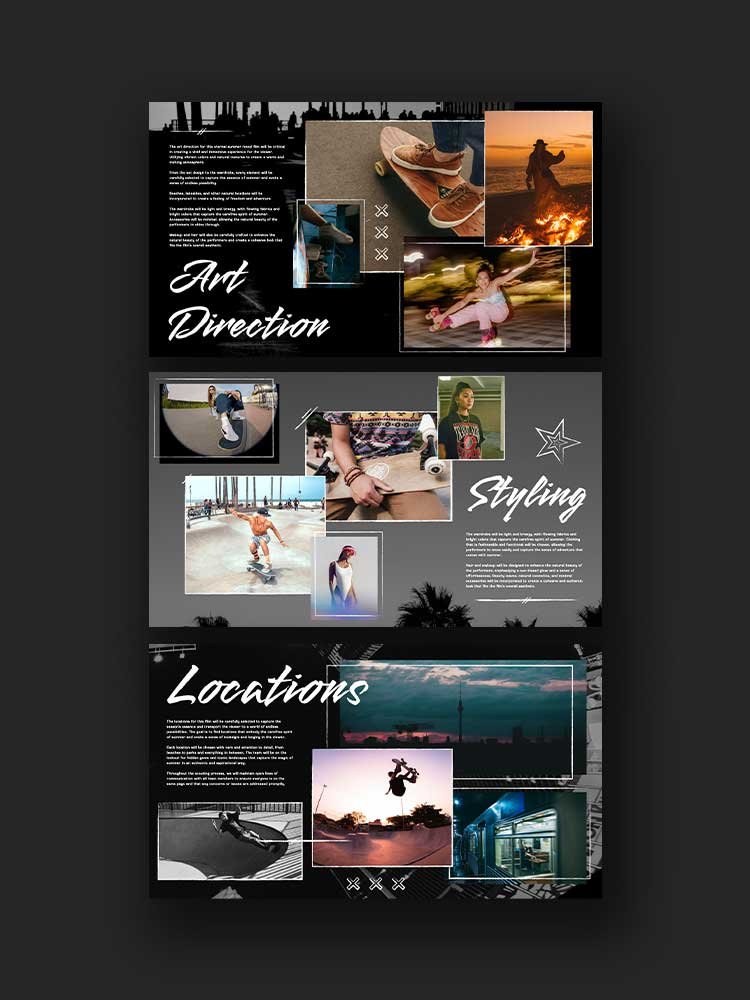What Is A Commercial Treatment? Everything You Need To Know!
A commercial treatment, often referred to as a director's treatment, is an essential element of the advertising world and directing commercials.
It is often seen as the first crucial step for a commercial director in getting the job and, eventually, producing a successful commercial.
In this blog post, we'll delve into the fascinating world of creating director treatments, exploring their purpose, process, and key elements that make them valuable assets.
The Essence of a Commercial Treatment
A commercial treatment is a document created by commercial directors that outlines the director's vision, ideas, and approach to a specific advertising project.
It aims to express the commercial director's interpretation of the script and their plan for bringing the story to life and reaching the client's desired audience.
The treatment typically includes a combination of images, text, and sometimes even videos, which create a visual and narrative representation of the story and the director's vision for the project.
Why Are Commercial Treatments Important?
In the competitive advertising world, commercial treatments play a critical role in securing jobs for directors.
Advertising agencies and their clients review multiple treatments from different commercial directors before deciding who will direct the commercial.
A well-crafted treatment can be a valuable asset to help establish trust with the clients and demonstrate that the director has a strong vision for the project.
Commercial treatments are essential because of the following:
Communication: A commercial treatment is a bridge between the director, advertising agency, and their client, effectively conveying the director's creative vision of all the elements in the project.
It helps the client understand how the final product will look and feel and ensures everyone is on the same page.
Selection: Advertising agencies and clients often ask many directors to pitch for a job, use director treatments to compare the options, and choose the right person for the job.
A captivating treatment can set a director apart from their competition, increasing their chances of being selected for the project.
Planning: A detailed treatment can help the production team understand the director's vision, allowing them to plan and execute the shoot more effectively.
It can also help the director identify any potential issues or challenges in advance and find solutions for them.
Key Elements of a Commercial Treatment
Successful commercial treatments should include various elements that work together to create a comprehensive and engaging picture of the director's vision.
Here are some key components that you should consider when creating a treatment:
Introduction: Start your treatment with a captivating introduction summarizing the project and setting the tone for the rest of the document. This section should be concise and engaging, quickly drawing the reader in and giving them a taste of what's to come.
Director's Statement: In this section, the director should express their personal connection to the project and explain why they are the best person to bring the idea to life. This can include their past experiences, unique insights, or creative approach that makes them the perfect fit for the job.
Visuals: A commercial treatment should be rich in visuals, as they are crucial in communicating the director's vision. This can include photographs, illustrations, mood boards, or even video clips that help illustrate the project's look, feel, and style.
Story: The treatment should also outline the commercial's narrative, explaining how the director plans to tell the story and engage the audience. This can include key scenes, moments, or beats that the director believes will be most impactful.
Tone and Style: A crucial aspect of the treatment is defining the tone and style of the commercial. This can include pacing, color grade, and art direction, which create a distinct atmosphere for the project.
Production Plan: The treatment should also detail the director's plan for executing the project, including shoot days, locations, lens package, and any other relevant information.
This section demonstrates that the director has thought through the logistics of the production and is prepared to deliver a successful final product.
Conclusion: Wrap up your treatment with a strong conclusion that ties everything together and leaves a lasting impression on the reader.
Reiterate the key points and highlight the unique aspects of your vision that make you the best choice for the project.
Creating an Impactful Commercial Treatment
Here are some tips for creating a commercial treatment that stands out from the competition and captures the attention of clients and advertising agencies:
Be Unique: Showcase your individuality and unique perspective on the project. Clients often look for directors with a fresh and innovative approach, so don't be afraid to think outside the box and push creative boundaries.
Be Visual: As mentioned earlier, visuals are crucial in communicating your vision. Use high-quality images, illustrations, or video clips to create a visually stunning treatment that effectively conveys your ideas.
Be Clear and Concise: While it's essential to include all relevant information, make sure your treatment is easy to read and digest. Keep your writing clear and concise, and avoid using overly complex language or jargon.
Be Engaging: A captivating treatment should be engaging and enjoyable to read. Use a conversational tone, inject some personality into your writing, and ensure your passion for the project shines through.
Be Thorough: Don't leave any questions unanswered in your treatment. Clients and advertising agencies will be looking for specific answers to their questions, so make sure you address all their concerns and demonstrate a comprehensive understanding of the project.
The World of Commercial Treatments: In Conclusion
Commercial treatments are a vital part of advertising, allowing directors to showcase their creative vision and convince clients that they are the right person for the job.
By creating a captivating, visually stunning, and well-structured treatment, directors can increase their chances of securing jobs and making a lasting impression in the competitive world of commercial directing.
Remember that your treatment is your chance to express your ideas, highlight your unique approach, and demonstrate your passion for the project.
Use the tips and insights shared in this blog post to create a standout commercial treatment that will help you secure your next project and make a lasting impact in the commercial world.
Happy writing!
Frequently Asked Questions About Commercial Treatments
What is the main purpose of a commercial treatment?
The primary purpose of a commercial treatment is to communicate the director's vision, ideas, and approach to a specific advertising project.
It helps clients and advertising agencies understand how the director plans to bring the story to life and serves as a tool to compare different directors and choose the best fit for the project.
Who typically writes the commercial treatment?
The commercial treatment is usually written by the director or, in some cases, by a professional treatment writer in collaboration with the director.
The director's input is essential to ensure the treatment accurately reflects their vision and ideas.
How long should a commercial treatment be?
There's no one-size-fits-all answer to this question, as the length of a commercial treatment can vary depending on the project's complexity and the director's approach.
However, most treatments typically range from 5-15 pages, focusing on being clear, concise, and engaging.
What types of visuals can be included in a commercial treatment?
A commercial treatment can include a variety of visuals, such as photographs, illustrations, mood boards, and video clips.
These visuals help communicate the director's vision for the project and give the reader a better understanding of the intended look, feel, and style.
How do clients and advertising agencies use commercial treatments?
Clients and advertising agencies use commercial treatments to compare directors and choose the best fit for their projects.
They review multiple treatments and look for a strong vision, a unique approach, and a well-thought-out plan for executing the project.
How can a director make their commercial treatment stand out?
To make their commercial treatment stand out, a director should focus on showcasing their unique perspective, creating a visually stunning presentation, being clear and concise in their writing, engaging the reader, and thoroughly addressing all questions and concerns related to the project.
Can a commercial treatment be revised?
Yes, a commercial treatment can be revised based on client or advertising agency feedback.
It's essential to be open to suggestions and collaborate closely with the client to ensure the treatment meets their expectations and requirements.








































